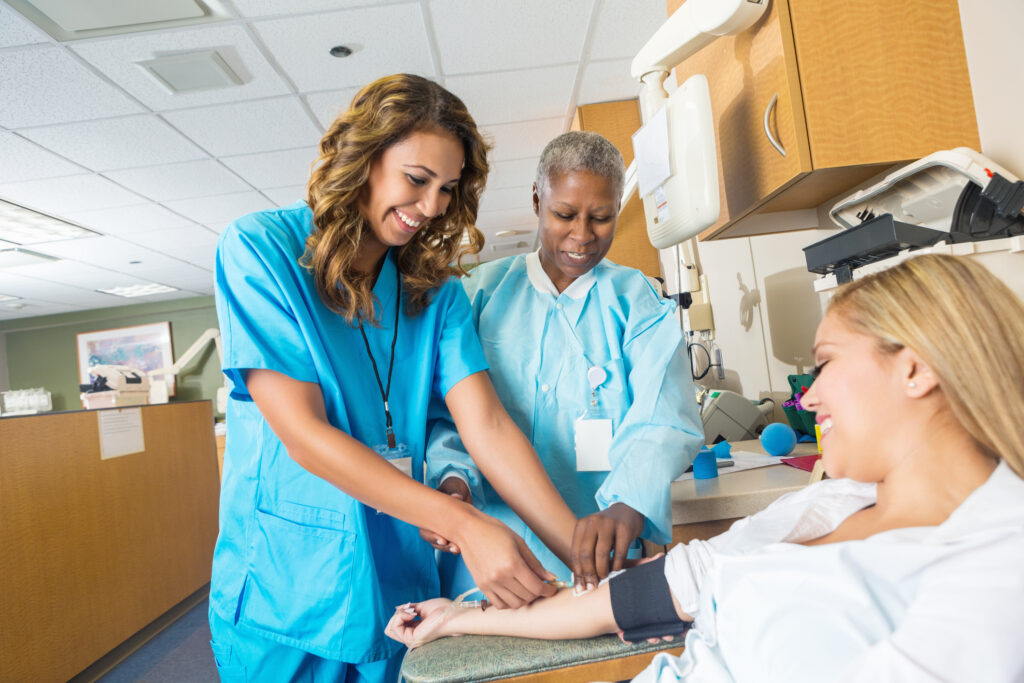Northeast Medical Institute - New Haven Campus Phlebotomy Course & Cna Class - An Overview
Get This Report about Northeast Medical Institute - New Haven Campus Phlebotomy Course & Cna Class
Table of ContentsHow Northeast Medical Institute - New Haven Campus Phlebotomy Course & Cna Class can Save You Time, Stress, and Money.The Best Strategy To Use For Northeast Medical Institute - New Haven Campus Phlebotomy Course & Cna ClassThe 20-Second Trick For Northeast Medical Institute - New Haven Campus Phlebotomy Course & Cna ClassNortheast Medical Institute - New Haven Campus Phlebotomy Course & Cna Class for DummiesThe Facts About Northeast Medical Institute - New Haven Campus Phlebotomy Course & Cna Class RevealedGetting The Northeast Medical Institute - New Haven Campus Phlebotomy Course & Cna Class To Work
However, using such tools need to be gone along with by various other infection prevention and control practices, and training in their use. Not all safety devices are applicable to phlebotomy. Before selecting a safety-engineered device, individuals must extensively explore readily available devices to determine their proper usage, compatibility with existing phlebotomy methods, and effectiveness in safeguarding staff and patients (12, 33).For settings with low resources, expense is a driving variable in purchase of safety-engineered devices. Where safety-engineered tools are not readily available, knowledgeable use of a needle and syringe is acceptable.
Among the vital markers of quality of care in phlebotomy is the participation and participation of the person; this is equally valuable to both the health employee and the individual. Clear details either created or verbal must be available to every individual that goes through phlebotomy. Annex F provides example text for explaining the blood-sampling treatment to a person. In the blood-sampling room for an outpatient division or center, offer a comfy reclining sofa with an arm rest.
The Ultimate Guide To Northeast Medical Institute - New Haven Campus Phlebotomy Course & Cna Class
Guarantee that the indications for blood sampling are plainly specified, either in a created procedure or in documented instructions (e.g. in a lab type). At all times, comply with the methods for infection avoidance and control listed in Table 2.2. Infection prevention and control methods. Gather all the tools needed for the procedure and area it within safe and easy reach on a tray or trolley, making sure that all the products are plainly visible.
Where the client is grown-up and aware, follow the actions detailed below. Introduce yourself to the person, and ask the individual to specify their complete name. Examine that the laboratory type matches the client's identification (i.e. match the patient's details with the research laboratory form, to ensure exact identification). Ask whether the license has allergic reactions, anxieties or has ever fainted during previous shots or blood attracts.
Make the individual comfy in a supine setting (when possible). Place a clean paper or towel under the client's arm. Go over the examination to be done (see Annex F) and get verbal approval. The individual has a right to refuse an examination at any kind of time before the blood sampling, so it is very important to ensure that the person has actually recognized the treatment.
The Definitive Guide to Northeast Medical Institute - New Haven Campus Phlebotomy Course & Cna Class
Extend the person's arm and examine the antecubital fossa or forearm. Situate a blood vessel of a great dimension that is noticeable, straight and clear. The diagram in Area 2.3, shows common placements of the vessels, but lots of variants are feasible. The average cubital vein lies in between muscles and is typically one of the most simple to penetrate.
DO NOT insert the needle where blood vessels are drawing away, due to the fact that this increases the chance of a haematoma. check Finding the capillary will aid in figuring out the right size of needle.
Haemolysis, contamination and existence of intravenous fluid and medication can all alter the outcomes (39. Nursing personnel and doctors might access central venous lines for specimens adhering to protocols. Nevertheless, specimens from central lines bring a threat of contamination or erroneous laboratory test outcomes (https://www.4shared.com/u/c2pfSlvK/gordonmarvin28.html). It is appropriate, but not excellent, to attract blood samplings when very first introducing an in-dwelling venous tool, before connecting the cannula to the intravenous liquids.
Not known Facts About Northeast Medical Institute - New Haven Campus Phlebotomy Course & Cna Class
Enable the location to completely dry. Failure to permit sufficient call time raises the danger of contamination. DO NOT touch the cleaned up website; in particular, DO NOT place a finger over the vein to guide the shaft of the subjected needle. It the site is touched, repeat the sanitation. Do venepuncture as adheres to.
Ask the individual to develop a fist so the veins are much more famous. Go into the blood vessel promptly at a 30 level angle or much less, and remain to present the needle along the blood vessel at the most convenient angle of access - CNA Training. When sufficient blood has actually been accumulated, release the tourniquet prior to withdrawing the needle
Northeast Medical Institute - New Haven Campus Phlebotomy Course & Cna Class Fundamentals Explained
Withdraw the needle carefully and use mild pressure to the website with a tidy gauze or dry cotton-wool sphere. Ask the client to hold the gauze or cotton woollen in area, with the arm prolonged and raised. Ask the client NOT to bend the arm, because doing so causes a haematoma.

Things about Northeast Medical Institute - New Haven Campus Phlebotomy Course & Cna Class
Where feasible, maintain the tubes in a shelf and move the rack in the direction of you - https://fliphtml5.com/homepage/fgjfk/gordonmarvin28/. If the example tube does not have a rubber stopper, inject very slowly right into the tube as lessening the pressure and rate used to move the sampling lowers the threat of haemolysis.
